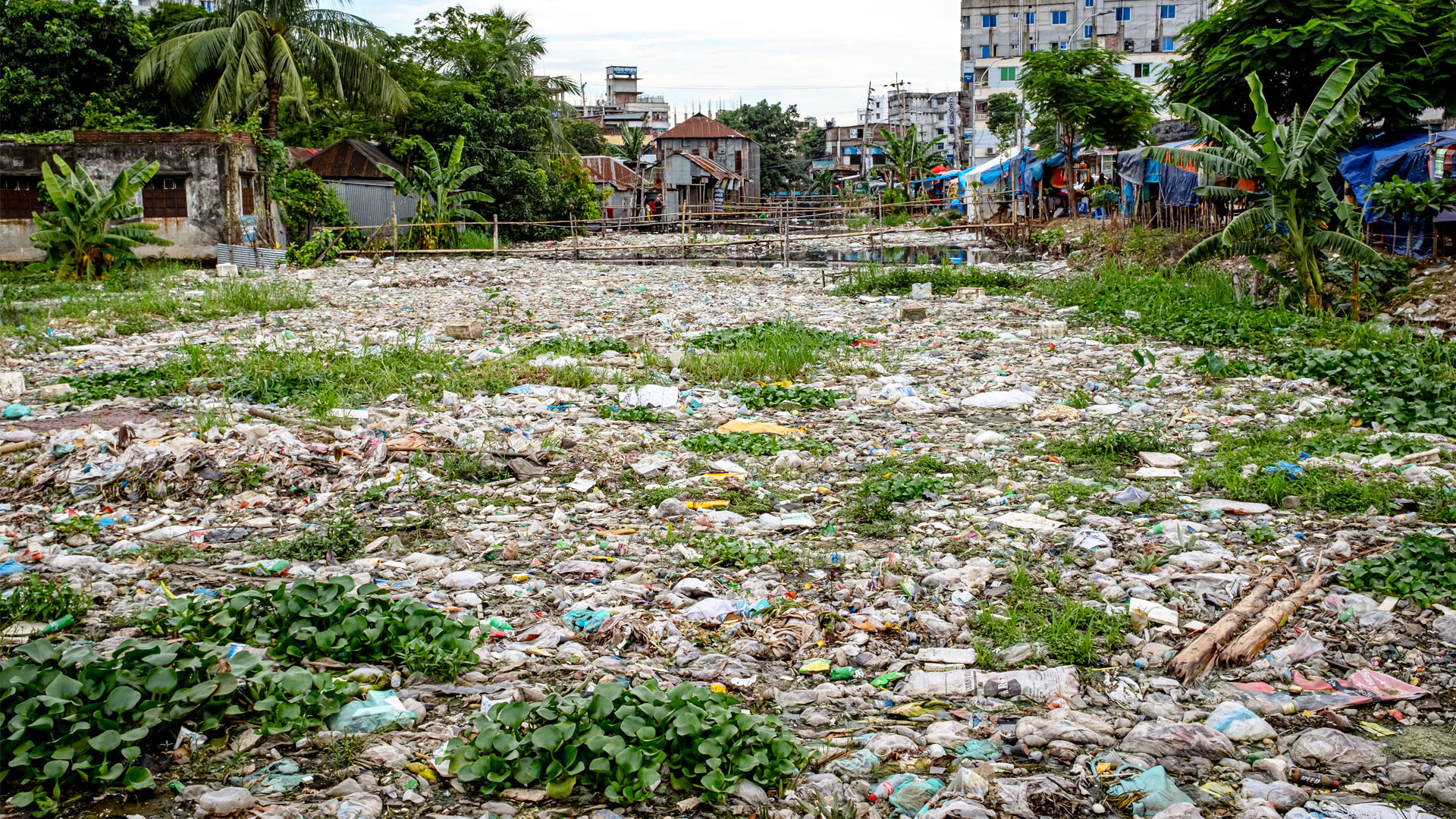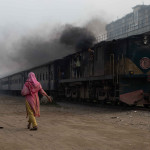Water Pollution in Bangladesh:
Causes, Consequences, and the Role of Platform Bangladesh in Remediation
Water pollution is one of the most urgent environmental and public health crises in Bangladesh. Contaminated rivers, canals, and groundwater—polluted by industrial effluents, agricultural runoff, plastic waste, and poorly maintained urban water systems—threaten millions of lives. This thesis investigates both rural and urban dimensions of water pollution, including the deteriorating quality of drinking water supplied by Dhaka WASA pipelines. It analyzes the causes, consequences, and institutional failures contributing to the crisis. Special focus is placed on the work of Platform Bangladesh, a civil society organization leading remediation efforts through research, advocacy, and grassroots action. The study concludes with strategic recommendations to ensure sustainable and equitable access to clean water for all Bangladeshis.
1.1 Background Bangladesh, a riverine country with over 700 rivers, is heavily reliant on its water bodies for agriculture, fisheries, and domestic use. However, rapid urbanization, industrialization, and weak environmental enforcement have severely polluted surface and groundwater sources. Compounding the crisis, city water systems—especially in Dhaka—deliver contaminated drinking water through corroded and leaking pipelines, exposing millions to daily health risks.
1.2 Problem Statement More than 30 million Bangladeshis lack access to safe drinking water. Industrial pollution, arsenic in groundwater, and contaminated urban pipelines all contribute to this multifaceted crisis. The health, ecological, and economic costs are immense, and the burden falls disproportionately on the poor. Civil society’s role in addressing these systemic failures is increasingly critical.
1.3 Objectives
- Identify the key sources of water pollution in Bangladesh
- Evaluate the health, economic, and ecological impacts
- Analyze institutional and governance challenges
- Examine the role of Platform Bangladesh in remediation efforts
- Recommend practical strategies for sustainable water management
2. Sources and Causes of Water Pollution
2.1 Industrial Waste Textile, tannery, dyeing, and pharmaceutical industries discharge toxic chemicals—often untreated—into rivers such as the Buriganga, Turag, and Karnaphuli, rendering them biologically dead.
2.2 Agricultural Runoff Overuse of chemical fertilizers and pesticides in rural areas contributes to nutrient pollution, algal blooms, and contamination of shallow groundwater.
2.3 Domestic Sewage and Plastic Waste Most cities lack effective sewage systems, resulting in raw waste and solid garbage entering canals and rivers. Plastic debris clogs drains and adds persistent pollutants to water bodies.
2.4 Groundwater Contamination Rural tube wells often yield arsenic-contaminated water. Excessive iron, nitrates, and bacterial presence are also common due to poor sanitation and chemical leaching.
2.5 Unsafe Urban Drinking Water (WASA) Dhaka WASA’s aging pipeline network frequently leaks, allowing sewage intrusion and bacterial contamination. Inadequate chlorination, poor maintenance, and illegal connections make piped water unsafe, especially in low-income neighborhoods.
3. Impact of Water Pollution
3.1 Public Health Crisis
- Waterborne Diseases: Diarrhea, cholera, typhoid, and hepatitis are rampant.
- Long-Term Exposure: Heavy metals like lead and arsenic cause cancer, organ failure, and developmental issues.
- Urban Contamination: E. coli and coliform bacteria frequently detected in WASA-supplied drinking water.
3.2 Economic Consequences
- Livelihood Losses: Pollution devastates fishing communities and reduces crop productivity.
- Healthcare Burden: Treating water-related illnesses strains public health systems and household finances.
- Urban Inequity: The poor pay more—either to boil water or buy bottled alternatives.
3.3 Environmental Degradation
- Dead Rivers: Rivers like the Buriganga have zero dissolved oxygen.
- Biodiversity Collapse: Aquatic species are disappearing rapidly.
- Soil Pollution: Polluted water used in farming degrades soil quality and food safety.
4. Policy and Institutional Challenges
4.1 Regulatory Framework
- Environment Conservation Act (1995) and Water Act (2013) exist but lack enforcement.
- Environmental Impact Assessments are often falsified or ignored.
4.2 Institutional Failures
- Fragmented responsibilities across ministries
- Under-resourced Department of Environment (DoE)
- Weak monitoring and minimal penalties for violators
4.3 WASA Oversight Failures
- No independent audit of water quality
- Infrequent infrastructure upgrades
- Limited public access to test results
- Widespread public mistrust in water utility services
5. Role of Platform Bangladesh
5.1 Advocacy and Policy Reform
- Campaigns for mandatory ETPs in industrial zones
- Legal pressure on government agencies for stricter pollution controls
- Advocacy for transparent water quality data from WASA
5.2 Community Awareness and Education
- Workshops on water purification, safe storage, and sanitation
- School programs on water conservation and pollution prevention
- Mobile awareness drives and online campaigns
5.3 Scientific Monitoring
- Water sample collection from rivers and urban supply lines
- Lab testing for bacteria, heavy metals, and arsenic
- Open publication of test results to raise awareness and accountability
5.4 River and Canal Clean-Ups
- Youth-led cleanup drives in Dhaka and surrounding cities
- Removal of plastic and organic waste
- Restoration of natural drainage systems
5.5 Urban Drinking Water Campaigns
- Distribution of affordable water testing kits
- Education on safe boiling and low-cost filtration methods
- Advocacy for modernizing WASA infrastructure and emergency pipeline repairs
6. Strategic Recommendations
6.1 Legal and Regulatory Strengthening
- Establish independent Water Quality Monitoring Authority
- Impose stricter fines on illegal industrial discharge
- Require monthly public reporting of WASA test results
6.2 Infrastructure Development
- Replace WASA pipelines in contamination hotspots
- Build decentralized wastewater treatment plants
- Invest in green infrastructure for stormwater management
6.3 Sustainable Practices
- Promote organic farming to reduce chemical runoff
- Ban single-use plastics and incentivize eco-friendly alternatives
- Scale up rainwater harvesting and water reuse systems
6.4 Community Engagement
- Form neighborhood water watchdog groups
- Support citizen-led water testing initiatives
- Integrate local voices into city water planning committees
Water pollution in Bangladesh is a widespread, systemic crisis affecting both rural ecosystems and urban populations. From industrial waste in rivers to contaminated drinking water in city homes, the issue threatens health, livelihoods, and national development. While policy frameworks exist, enforcement is weak, and institutional accountability is limited. In this context, civil society organizations like Platform Bangladesh provide a beacon of hope. By mobilizing communities, exposing violations, and advocating for policy change, they are helping reshape the future of water governance in Bangladesh. Clean water is not a luxury—it is a human right, and a critical pillar of sustainable development.
References
- Dhaka WASA Annual Reports (2022–2024)
- Department of Environment (DoE), Bangladesh
- WHO – Guidelines for Drinking-Water Quality
- Platform Bangladesh Environmental Reports (2023–2025)
- World Bank: The Invisible Water Crisis
- UNESCO – Water for a Sustainable World
- WaterAid Bangladesh – Urban Water Safety Assessments
- The Daily Star – Investigative Journalism on Water Pollution


